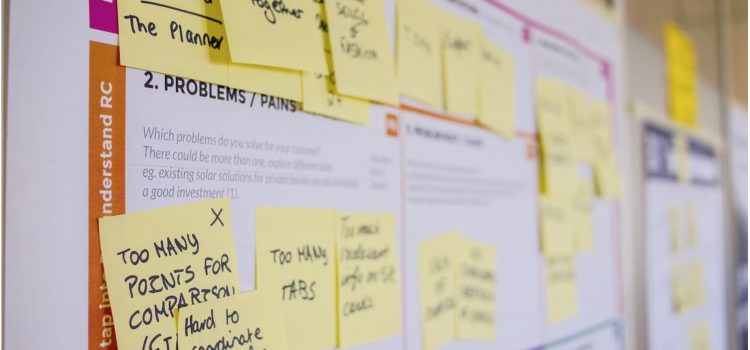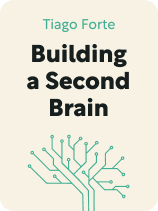

This article is an excerpt from the Shortform book guide to "Building a Second Brain" by Tiago Forte. Shortform has the world's best summaries and analyses of books you should be reading.
Like this article? Sign up for a free trial here.
Are you in the final stages of a project? How do you complete a project that’s important to you?
In Building a Second Brain, Tiago Forte explains that after note-taking, sorting information, and refining information, you’re ready to move on to the final stages of your project. Forte’s recommendations on how to complete a project can be broken down into three strategies.
Keep reading to learn how to complete a project with these three strategies.
Strategy #1: Discard Useless Information and Create Task Bundles
Here’s how to complete a project by sorting through your material and outlining all the tasks you must complete to finish the project.
First, sort through all the information in the project sub-folder to determine what you’ll use and what can be moved to your hold folder. This step should be applied to entire notes and pieces of information within a note. For example, if an entire note is no longer helpful, move it to hold. If a note is relevant but you’ll only use two of the main points, save those points and move the rest of the note to hold.
(Shortform note: Education experts emphasize that if, during this step, you find yourself discarding a large quantity of information, you may need to go back to the drawing board. In other words, if a good portion of the information you’ve saved turns out to be irrelevant, this might indicate that you either need to narrow the scope of your project or go back into expansion mode to collect more relevant information.)
Next, identify each small task necessary to complete your project, create a subfolder for each task within your project subfolder, and order the subfolders chronologically. Forte calls these subfolders “Intermediate Packets,” but we’ll call them “task bundles” for clarity. The task bundles for an essay might look like “research material,” “thesis,” “paragraph 1,” and so on.
Finally, sort the information and notes within the main project subfolder into the task bundle(s) that they’ll be used for. Creating task bundles and sorting information into them based on relevance will improve productivity and make your work less overwhelming by portioning the entire project into small tasks that can be completed in one sitting. Once each of the task bundles is complete, your project will be complete.
Forte also recommends saving and reusing task bundles—when completing a current project, try to reuse old task bundles whenever possible to save time repeating work that you’ve already done. For example, if you’re writing an essay on a topic you’ve written about before, you might be able to reuse notes or even entire paragraphs from your old essay.
Comparing and Contrasting Forte’s Method of Task Planning With David Allen’s
In Getting Things Done, David Allen’s advice for outlining tasks for projects is similar to Forte’s, yet it has some key differences.
First, Allen and Forte both recommend creating a list of essential project tasks and ordering them chronologically. However, Allen’s method recommends that you store the information and resources needed to complete projects in one big project support materials folder, rather than in smaller task bundles. Further, the chronological list of tasks needed for a project is kept in a separate next actions folder, whereas Forte’s method simply orders the task list chronologically within the project subfolder itself.
These differences make Allen’s method slightly less organized and arguably more time-consuming, as you’ll have to navigate back and forth between different folders to identify what to do next, find information, and get work done. Meanwhile, Forte’s method of creating task bundles arguably makes tasks easier to complete—when you want to work on tasks for a project, everything you need is in one location. You open the project subfolder, open the task bundle you want to work on based on its chronological location, and complete the work for that task within the bundle where all the information you need is already housed.
Further, Forte’s recommendation to reuse old task bundles for current products might boost productivity more than Allen’s system. Saving task bundles from old projects and reusing them in current ones will save time that would be wasted re-doing work you’ve already done.
On the other hand, Allen makes a recommendation to improve productivity that Forte’s method lacks. Allen suggests that you clearly define the amount of time, energy, and resources needed to complete each task. This ensures that you’re fully prepared to complete a task before starting it: otherwise, you might find yourself starting a task and having to stop at an inconvenient time. For example, if you start to replace the radio in your car but find out that it takes twice the amount of time you’ve allotted and that you’re missing a part that costs $500, you might have wasted time and resources on a task that you can’t complete at the moment.
Strategy #2: Plan Your Next Session
Next, Forte says that at the end of every work session, you should identify the next steps to guide your next work session. To do this, record:
- The status of your project, such as your biggest challenges or unanswered questions
- Any barriers that you anticipate cropping up in the future
- Any small details that you might forget before the next session, such as how one idea relates to another or why you changed your mind about something
This will maximize your productivity by allowing you to pick up exactly where you left off and continue your train of thought despite hours or days separating you from the last session.
(Shortform note: In Deep Work, Cal Newport takes Forte’s recommendation to plan your next work session a step further, recommending that you create a “workday shutdown ritual.” In addition to the steps, Forte recommends taking, this routine includes the following practices: (1) checking your email for any last-minute updates or urgent items that might impact your next work session; (2) reviewing deadlines for your project if there are any; and (3) using a signal phrase like “all done” to get your brain out of work-mode and explicitly end the day. Newport claims that these practices will help increase your productivity by allowing your brain to fully check out of work mode so it can properly rest before your next work session.)
Strategy #3: Prioritize Completion Over Perfection
Forte notes that the desire for perfection often prevents us from completing projects in a productive manner—we get caught up on small details, thinking up additional components we want to add, or trying to find the best information. This causes us to go in circles until we get burnt out and eventually delay or cancel the project altogether.
If you find yourself getting caught up in perfection—continually looking for new information or getting overwhelmed by the number of task bundles—consider narrowing the scope of your project. While the scaled-down project might not be perfect, making it smaller will allow you to keep your momentum and ensure that the project gets done. While pausing parts of your project might seem difficult, Forte explains that it’s always possible to revisit the project at a later date to revamp it.
For example, imagine that you’re working on building a car and decide that you want to add fancy features like leather seats, a radar detector, and a rear camera. However, these items are complicated to install, hard to find, or over your current budget, and trying to include them is delaying the project. Instead of keeping the car in the garage until these tasks are feasible, narrow the scope of the project and revisit these components at a later date so you can get a basic version of the car on the road and complete your project.
How to Overcome Perfectionism
Like Forte, Elizabeth Gilbert explains in Big Magic that perfectionism is one of the biggest barriers to creativity and productivity. She elaborates that perfectionism is a psychological ailment that takes time and practice to overcome.
Forte’s method of simply narrowing the scope of your project might help overcome perfectionism in the moment, but it’s likely not enough to solve the underlying psychological issue that’s causing your perfectionist urges. To solve this issue at its core and overcome perfectionism for good, Gilbert recommends that you regularly practice the following methods:
- Try to be more realistic right out of the gate—before starting a project, decide what you can reasonably accomplish within the allotted amount of time.
- Take pride in completion rather than perfection—celebrating the accomplishment of finishing a project will encourage you to aim for completion rather than perfection in the future.
- Don’t worry about what others think—often, we strive for perfection because we think others will look at us negatively if we finish a project that’s less than perfect.
- Take joy in moving on—rather than getting held up on making your project perfect, look forward to the new endeavors you can take on once you’re done.

———End of Preview———
Like what you just read? Read the rest of the world's best book summary and analysis of Tiago Forte's "Building a Second Brain" at Shortform.
Here's what you'll find in our full Building a Second Brain summary:
- Why we get frustrated and overwhelmed in the age of information
- Why modern humans need an external storage system (ESS)
- How to make and organize an ESS to increase creativity and productivity







Katie,
Great explanation! I keep coming back to this when reading Building a Second Brain.
Specifically, I couldn’t figure out where the 1st strategy is coming from. The hold folder, creating subfolders for each task of a project, and then sequence them. Where is this mentioned in the book?
I found your summary to be an essential companion to the book.